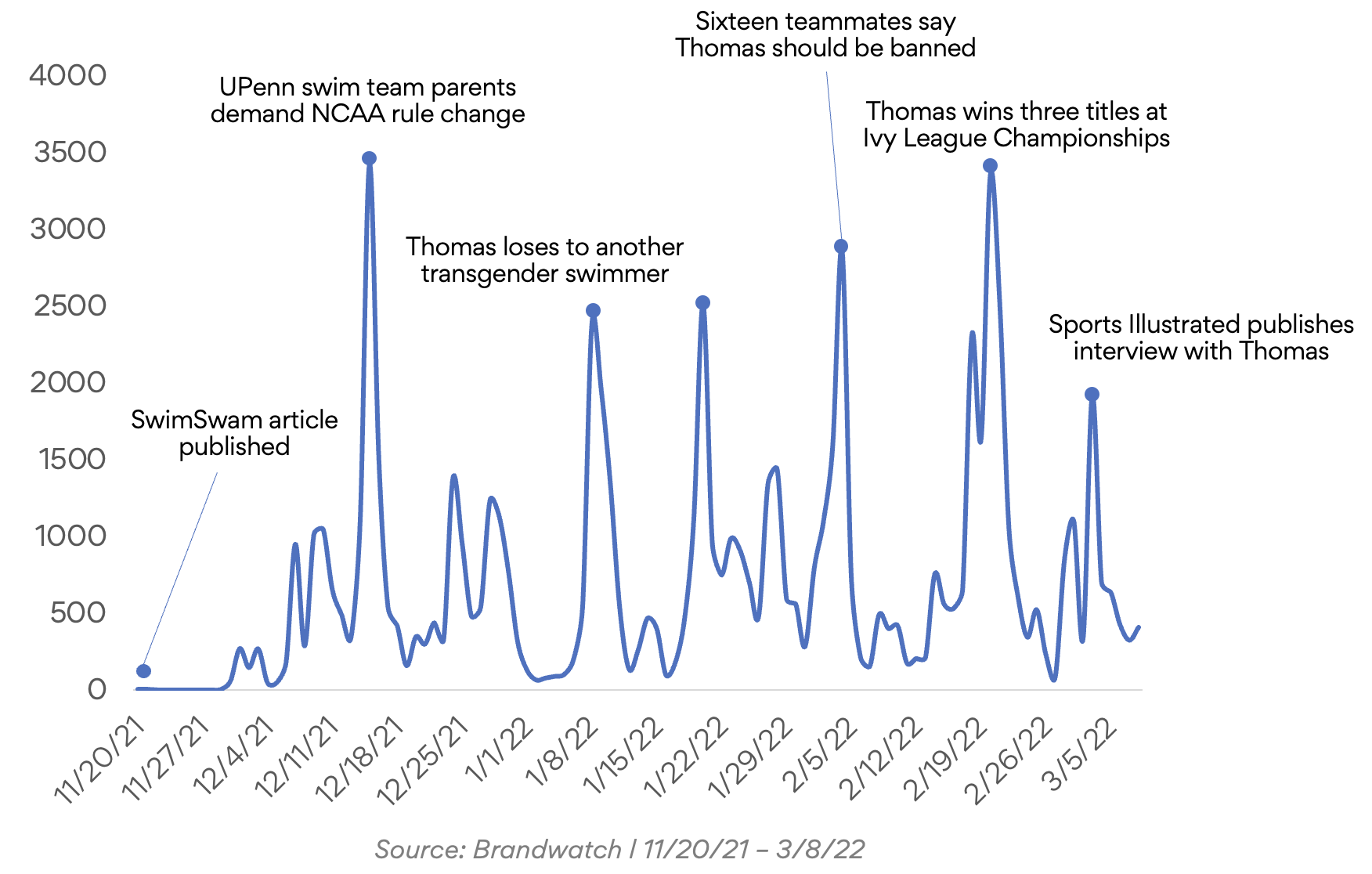The athletic landscape is becoming increasingly complex to navigate with the emergence of transgender athletes.
One transgender athlete, University of Pennsylvania swimmer Lia Thomas, has elevated this debate to the national level in just four months. After competing for Penn as a man and ranking 462 in the nation, she transitioned to female and competed with the women’s team, jumping to a number one national ranking and, in the words of the Washington Post, “shattering records.”
Thomas’ success has led to questions around whether male-to-female trans athletes possess an unfair physical advantage over other women and, if so, whether that advantage can be sufficiently neutralized with hormone therapy. Responsibility for setting rules and guidelines governing participation is shared among various entities including the International Olympic Committee (IOC), the NCAA, various professional leagues and organizations, and the national governing bodies of each sport. As has been the case with many issues today, the Thomas story has become heavily politicized, forcing institutions to reexamine their policies when it comes to diversity and inclusion.
A SwimSwam article in late November launched the initial wave of media coverage that spiked on December 15th when parents of the UPenn swim team penned a letter demanding NCAA rule changes to prevent Thomas from competing. Anonymous interviews and petitions on both sides of the debate eventually prompted the NCAA and USA swimming to enact policy changes.
On June 19th, the International Swimming Federation (FINA) announced that they would require transgender competitors to complete their transition by age 12 to be able to perform in international women’s competitions. They also discussed adding an “open” category to allow transgender females to compete. FINA is the first sport’s international governing body to publish restrictions requiring transition by a certain age. As this issue continues to impact the sports world, it is necessary for sports governing bodies and universities to start considering their positions.
Online Mentions of UPenn Swimmer Lia Thomas

Most Engaged Tweets:
Just to show you how absurd this is. Here’s the trans swimmer “Lia” Thomas crushing all of the female competitors by 40 seconds. This is what that looks like in real time. A total farce.
— Matt Walsh (@MattWalshBlog) December 15, 2021
Transmisogyny is seeing articles like "Lia Thomas Beaten By Trans Swimmer Iszac Henig" and assuming that the other trans person is a trans woman.
Iszac is a trans man who has not started HRT required to compete in the male category.
Of course trans women get 100% of backlash. pic.twitter.com/fmeAk6HQEa
— Erin Reed (@ErinInTheMorn) January 9, 2022
There are ZERO women in the county who believe it’s fair for Lia Thomas to dominate women’s swimming. Anyone saying it’s fair… is lying. This includes liberals.
— Liz Wheeler (@Liz_Wheeler) February 21, 2022
Throughout this process, the University of Pennsylvania administration chose not to release a public statement on the subject and turned off comments on many of their owned social media channels. Athletic Director Alanna Shanahan did send an internal email to the team (it was eventually leaked) expressing support for Thomas and adding that any athletes who were upset about the situation could “utilize robust resources available to them,” including the university’s department of Counseling and Psychological Services. Thomas did an exclusive interview with Sports Illustrated on March 3rd, 2022, stating: “The very simple answer is that I’m not a man, I’m a woman, so I belong on the women’s team. Trans people deserve that same respect every other athlete gets.”
What Can We Learn?
The IOC, NCAA, and USA Swimming organizations were all faced with tough decisions about rule updates in relation to transgender athletes’ ability to compete. While relying on the rules from the national and international governing bodies will provide some protection, universities will need to prepare communication to reflect how they are individually handling the situation.
Key Questions to Ask Yourself:
- Do we have a clear position on this issue and is our leadership aligned around that stance?
- What should we be prepared to discuss in connection with participation of transgender athletes?
- How can our organization manage the situation when it becomes the focus of such a politically charged issue?
- What communications assets should our organization have in place in advance?
Key Considerations:
- Listen: hold listening sessions with constituents across your organization to see how they feel about the issue and what they think should be done. Make sure that involvement includes members of the LGTBQI community
- Align: make sure that leadership in your organization is fully aligned around an agreed upon narrative and response to any potential issue that may arise
- Prepare: have communications assets written, approved, and in place for a quick response should any issue arise. These assets should include a standby statement, key messages, an explanation of policy, and a robust Q&A document
- Train: media train coaches, athletes, and leadership to ensure that they are well versed on the issue and prepared to speak publicly without triggering more controversy
- Find clarity: enlist the assistance of governing bodies over each sport to ensure that you are clear on all rules and regulations
- Exercise restraint: don’t appear to be intimidating people within your organization for expressing their personal views on the subject. Maintain an environment of free speech and open dialogue
No matter what your perspective may be on the issue, the cultural debate around transgender athletes is here to stay. Universities, athletic departments, and governing bodies need to be prepared to address the issue in a manner that is both transparent and agile.

